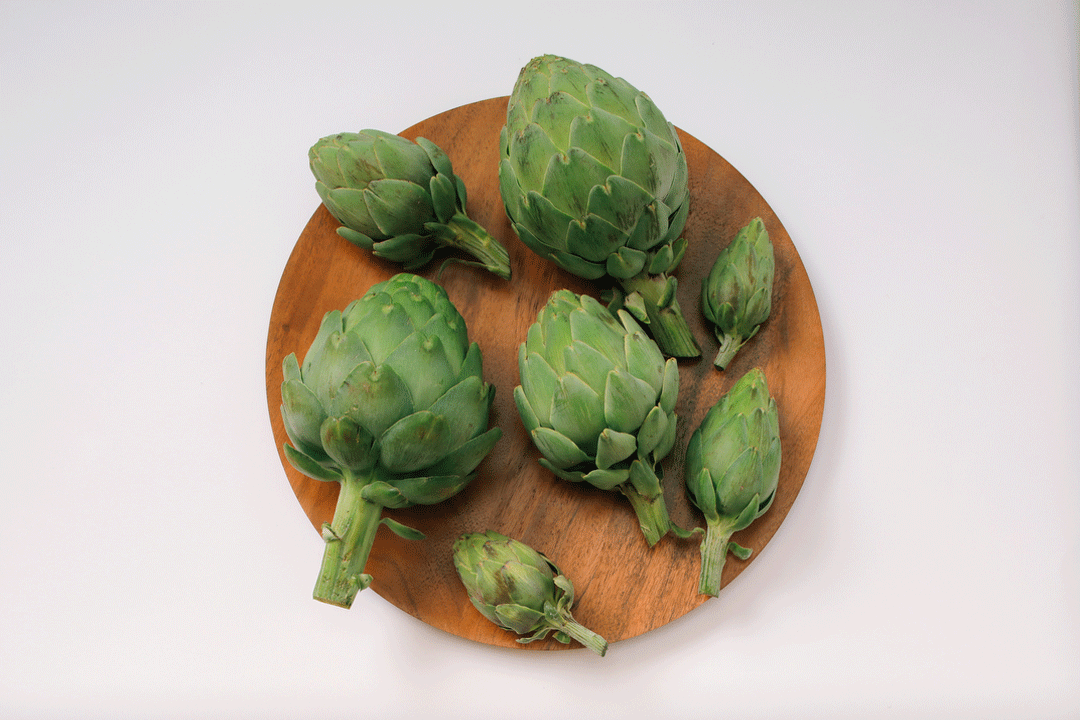Artichokes : Little Buddies
- Share via
If you often include edible flowers in your menus, you’re ahead of the times. We’ll all get there, I think, but so far the flower bud everybody loves to eat is, of course, the artichoke.
It stands on tall stalks amid a tracery of leaves in silvery blue-green. If you didn’t know the bud was great eating, you’d grow the plant for its beauty.
Artichokes grow easily anywhere if they have a long growing season within a whiff of the sea or another body of water. Moisture is really the key. Where summers are intensely hot, you can grow them if the air is moist. Where the air is dry, only the most determined should try their luck. Remember that artichokes are perennials (they last three or four years). If you don’t get a decent crop the first try, move the plant in winter, trying first one microclimate, then another, until something works.
For the resourceful, or for small gardens, a plant is wonderful in a big (up to 10-gallon) container--happy artichokes can reach four to five feet high--and as wide. The fronds look like those of artichoke’s close cousin, the thistle, and couldn’t be more sculptural.
*
The “Sunset Western Garden Book” says that, with afternoon shade, artichokes will grow even in desert climates. I’d add they need frequent spritzings with the hose. Here in the mountains, where the air is dry, our plants have grown to half their potential size, and buds were, well, edible, but only because I insisted they be.
Artichokes are hardy souls, enduring cold as low as 20 degrees. In all but the balmiest winter, they’ll lose their leaves in autumn, then come back, unfurling voluptuously, in spring. Where winters are cool and moist--along the coast from Oregon’s Gold Beach down to the California shore near Buellton, artichokes turn into little bud factories and are harvested, often commercially, the year around.
The French province of Brittany is legendary artichoke country. In this peninsula, which juts into the Atlantic, it’s a rare patch of land that doesn’t grow exemplary artichokes. Those grown on the northern coast of Brittany are choice, and they are whisked off to Paris and London while still babies.
For my money, baby artichokes are what growing artichokes is all about. Cut from the stalk when they’re the size of small plums, they haven’t yet developed a choke--the fuzzy center--and their leaves aren’t fibrous but tender-crisp. Baby artichokes not only nutty and full flavored but fun to eat. You hold each bud by its tip and bite down at your fingertips. The soft inner leaves and heart pop into your mouth.
When you serve artichokes, be aware that there’s a compound in them that temporarily causes some people to perceive flavors as sweeter than they are. Most wine connoisseurs never serve a great wine anywhere near an artichoke, since the wine’s taste might be skewed.
One of the loveliest pleasures of a kitchen garden is that you constantly discover new things you can eat from it. Was it only last year that a friend pointed out that the stalks of artichokes are delicious? When young and firm, a stem’s texture and flavor are very like the heart. Resembling a long-stem rose, the stem of the artichoke bud is cut off at the main stalk. Another reason to grow your own artichokes is to enjoy the less common cultivars. Green Globe, whether from seed or root division, is considered the most reliable, but it’s much the same (if not wholly the same) as the kind you can buy. In the best of all possible worlds, you could find an Italian or French artichoke farmer who’ll give you a root division of small iridescent burgundy/rouge/pink teardrop Violetto or Violet, which you’ll plant at once.
Failing that, order seeds of Imperial Star and sow them indoors. This is a new University of California cultivar, fast growing, productive, thornless, slow to unfurl and adapted to coast and inland. When they’re strong seedlings, set them in the garden, or establish each in a three-gallon container. It’s unlikely you’ll get buds the first year, but let them winter over undisturbed and you should have buds in late spring or early summer.
Artichokes must have rich soil that holds moisture without getting soggy and enough water to keep that soil moist. Trap any slugs and snails and shoosh ants and aphids off with the hose in the morning. Where gophers or moles are a problem, line the hole with chicken wire. Mulch with aged manure in spring and fall. Where winters are cold, protect the plant with a deep mulch of straw.
Artichokes have the best flavor the day they’re picked (one more reason to grow them). If you must wait--if a bud is in imminent danger of unfurling and you won’t be home for a couple of days--plunge the stems in water and refrigerate.
Finally, should a bud start to open when you’re not looking, don’t be dismayed. Your pleasure will come not in the mouth, but with the eye. The flower will open in a puff of violet and cornflower-blue. Hang it upside-down to dry in a cool place, and you’ll have the artichoke long past summer.
Sources
Seek out baby artichokes at farmers markets and finer produce stands (plague the manager until some are ordered).
Seeds: Imperial Star and Green Globe from Lockhart Seeds, Box 1361, Stockton, Calif. 95205. Violetto from Pinetree Garden Seeds, Box 300, New Gloucester, Me. 04260.
Plants: Four-inch pots, local nursery or Raintree Nursery, 391 Butts Road, Morton, Wash. 98356.






